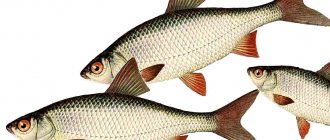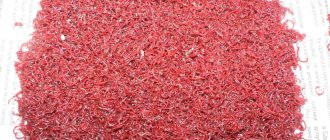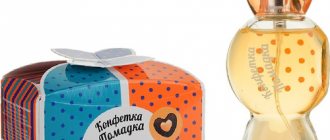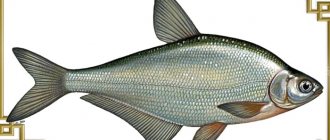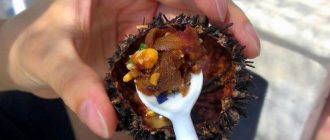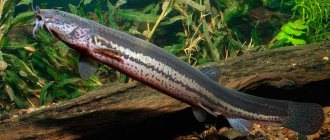Koretra is a nutritious live food for aquarium fish, which can be purchased at any pet store or grown independently in the garden. Larvae of mosquitoes of the Chaoborus family, not blood-sucking. Koretra lives in the upper layer of forest ponds, lakes, swamps and is a predator.
Koretra
On a note ! Koretra can well diversify the diet of your fish, especially since it is widespread everywhere. It is easy to obtain and also to preserve.
Description and appearance
The body of the corethra is fusiform and consists of 13-14 segments, the length of which can reach 12-14 mm. Body color largely depends on the food supply of the reservoir where it was caught, and ranges between dirty red and light yellow.
Coret for feeding aquarium fish
In the segments, the third from the end of the body, paired swim bladders , which are filled with gases produced by the body. Thanks to these bubbles, the body of the coretra is supported in the layer of water, does not sink to the bottom and takes a horizontal/vertical position. The head with eyes, which are a pair of black dots, is easy to distinguish. It also has bucket-shaped jaws. The plumage of the tail end consists of hairs directed vertically downwards. Koretra spends almost all its time in the middle and upper horizons, and very rarely sinks to the bottom.
Note ! The coretra is a predator that feeds on daphnia, cyclops, and the larvae of other insects, and does not disdain the fry of newly hatched spawning fish.
the larva remains for a long time , but when it gets warmer, it begins to pupate. The pupa is also closer to the surface, and sinks to the bottom only after it is disturbed. After about 12 days, an insect emerges from the pupa - the Chaoborus mosquito is not a blood-sucking mosquito. The body size of mosquitoes can reach 10 mm; they live in the grass near sea lakes and ponds. Often these insects are found in muddy and peat puddles/swamps.
Chaoborus
Description
The coretra is translucent, looks a bit like a bloodworm, with a spindle-shaped body and a separate head with clearly visible jaws. Reaches a length of up to 20 millimeters. Unlike bloodworms, it floats in the water column.
It lives in various bodies of water from small puddles to fairly large and deep lakes. The coretra stays in the water column, like fish, thanks to its swim bladders. The coretra moves due to sharp bends of the body, additionally assisting itself with the caudal fin, consisting of hairs hanging down. The color of the translucent body of the coretra depends on the color of its food in a given body of water and can vary from greenish or yellow to reddish.
Mosquito laying eggs photo can be enlarged
In the spring, with the onset of warmth, the coretra pupates. The pupa is easy to spot in puddles, near the surface of the water. When danger appears, it sinks deeper. The mosquito emerges from the larva after approximately 12 days and is up to 6 millimeters in size. Fishing for coretra usually begins with the onset of cold weather.
Due to the fact that the coretra floats in the water column, it is easy to catch with a net, just like daphnia or cyclops. The coretra is an outright predator, feeding on small crustaceans such as daphnia and cyclops, sometimes young larvae of other types of mosquitoes, and does not disdain even fish fry. Like a real predator, it grabs the prey with its mouthparts. Live coretra poses a danger to aquarium fish fry, so its entry into spawning grounds and nursery aquariums must be excluded.
Benefits of feeding fish with coretra
The main advantage of coretra is its high level of biological purity . Simply put, the risk of aquarium inhabitants contracting parasitic or infectious diseases while using it is almost zero.
Important ! Another advantage is that the larvae can be easily caught in any fresh water body or bred in artificial ponds.
Koretra has a high level of biological purity
This type of live food is vital for some species of fish, especially slow ones such as catfish and angelfish. During the breeding season of fish, feeding with coret becomes the basis. The larvae help stimulate natural instincts and force them to actively move in the hunt for moving prey. That is, they bring it as close as possible to natural living conditions.
Table. Comparison of the chemical composition of coretra with other live foods (in% dry weight).
| Name of food | Protein | Fats | Carbohydrates |
| Koretra | 42 | 5,4 | 49 |
| Artemia | 61-64 | 18-26 | — |
| Enhytraeus | 70 | 14 | 10 |
| Daphnia | 50 | 16 | 5 |
| Diaptomus | 58 | 24 | 3,5 |
| Bloodworm | 62 | 3 | 30 |
| Rotifers | 65-75 | 12-20 | — |
| Moina | 67 | 30 | — |
| Nematodes | 10 | 20 | — |
Live fish food
What is coretra?
Stopping at a tray with live food, a young aquarist, pointing to a neat pile of ruby-colored worms, proudly says to her companion: “Oh, I know, these are bloodworms.” But he immediately turns his eyes to an almost identical pile, but pale green, and asks in bewilderment: “Oh, what is this?” What could be lying next to the bloodworm?
Of course - koretra. This is also a mosquito larva, but of a different kind than a bloodworm. The genus is called Corethra plumicornis. The larva, about 10 mm long, has a spindle-shaped, elongated shape, translucent, with a segmented structure characteristic of mosquito larvae. Air cavities are visible inside. The color can range from pale green to sandy yellow, and in some reservoirs the coretra has a dirty brick-like hue.
coretra photo
How to get coretra?
It is better to harvest coretra in spring, autumn or winter. Indeed, in the summer, as noted above, active pupation begins, and therefore there will be a high risk that you will collect not larvae, but pupae. For fishing, choose a clean reservoir of shallow depth. You will also need a net made of synthetic fabrics with very small cells.
Net for catching coretra
So, immerse the net in the water and begin to make movements with them that describe a horizontal figure eight. At the same time, move along the figure eight arcs smoothly and slowly, without pressure, the reversal of the net should also be smooth. And moving along straight intersecting lines that form a figure eight, speed up the movement of the net, slightly increasing the pressure. Thanks to this, you will create a light whirlpool that can draw in additional amounts of coretra.
After filling the net with larvae, transfer them to an enamel bowl and cover with a thin layer of water. Deliver the catch home in this form, and prepare it for long-term storage on site.
Extraction of coretra
On a note ! Koretra is the purest living food, which is hard to disagree with. If we compare, for example, with a tubifex, the risk of fish becoming infected with infectious diseases is almost zero. Although if you are in doubt about the reservoir in which the larvae were caught, you can additionally disinfect them by keeping them in a weak solution of potassium permanganate for 1-2 days.
Video - Koretra, live food for fish
Independent fishing and breeding
Larvae are caught in autumn, winter or spring. In the summer they are not caught, as you can catch pupae, from which mosquitoes will quickly hatch in the aquarium. It is best to catch coretra in a shallow, clean body of water.
For fishing, use a large net with a fine synthetic mesh. It is immersed shallowly under water and makes movements reminiscent of an elongated figure eight. A light whirlpool is formed, which pulls the larvae into the net. After the net is filled with larvae, the catch is shaken out into a wide enamel container and filled with a small layer of water.
Koretra is not caught in the summer, as there is a high probability of catching pupae
The larvae can be easily bred in the country or on a personal plot. To breed coretra, you need a pond or a large container of water.
An initial application of biomass is not required; the larvae will breed on their own in standing water. Their number will depend on the size of the reservoir.
The advantage of Koretra fish food is that it is the safest against infectious diseases. The larvae are much cleaner than the tubifex and bloodworms, since they do not sink to the bottom and feed on live food. If there are still doubts about the purity of the caught coretra, then to disinfect it it must be kept in a weak solution of potassium permanganate for 1-2 days.
Koretra food is the safest for aquarium fish
Storage at home
The catch can be stored in one of several available ways:
- in a small amount of water;
- in wet paper or rag;
- frozen.
Regardless of the method chosen, the coretra should be stored at a low temperature to avoid rapid spoilage or pupation.
If you buy larvae in a store in small portions, then the best way to store them is to use a damp cloth or paper . But it is important to rinse them at least once a day under running water, and then place them on a slightly damp cloth and wrap them in it. Next, the resulting package is placed in the refrigerator, on the bottom shelf. This storage method will keep the coretra fresh for 7 to 14 days.
Using Wet Paper
Storing in a small amount of water is not much more complicated than the method described above, although more space will be required. You need to place the larvae in a container with water (0.5 liters per 1 tablespoon of food). If there are more larvae than normal, artificial aeration . The water needs to be changed approximately 1-2 times a day. It is also better to place the container with larvae on the bottom shelf of the refrigerator. This method, subject to careful care, allows you to keep the coretra fresh from 14 to 28 days.
If there is a lot of food or you want to stock up on it for future use, then it is better to freeze it . The suitable temperature for this is -18°C, which most modern freezers can handle without any problems. Before freezing, disinfect the coretra and drain excess water with a net. Next, lay the larvae in a thin layer on one half of a piece of fabric, cover with the other half. Place the resulting package on the freezer shelf.
Frozen coretra
Important ! We recommend freezing the coretra in small portions, so as not to defrost the entire layer each time - due to unnecessary freezing/thawing cycles, the quality of the feed deteriorates.
Acceptable portions are those that can be used within a week to a month. Ideally, one serving should be enough to feed all your fish once. Although this may cause problems at home. The shelf life of deep-frozen coretra is no more than 2 years .
Let us also note that dried coretra larvae are also sold in stores, but their quality and beneficial properties are very doubtful and are very inferior to their live counterpart.
Koretra food for aquarium fish breeding storage photo.
Extraction and breeding
You can always buy nutritious fish food in the store, but most likely they will offer frozen larvae. Live coretra can be easily obtained from the nearest body of water. Breeding such larvae at home is not difficult; it requires an area of open space, as well as a container with water. As a rule, the koretra starts on its own in stagnant water; its breeding in artificial reservoirs does not require the introduction of initial biomass for subsequent reproduction. The number of larvae directly depends on the size of the container.
Catching coretra
Catching coretra is not difficult. It is obtained with an ordinary net; even a children's net is suitable for catching insects. Much more work is to find a suitable clean reservoir, which is densely populated with coretra. When catching crustaceans, single specimens of these larvae are found almost everywhere, but real accumulations of coretras cannot be found everywhere.
Coretra storage
It is best to store live coretra in the refrigerator. There are two storage methods. In the first case, the larvae are wrapped in damp newsprint or a light, clean cloth moistened with cold water. In the second case, the coretra is placed in a shallow container, spread out in a thin layer and filled with water 2-4 mm from the bottom. In all cases, the storage is refreshed once a day and the larvae are rinsed.
coretra photo
Feeding live coretra
Since the coretra lives mainly in clean water, the entry of pathogens of dangerous diseases with it can be practically eliminated. In any case, the risk is minimal. But coretra is inferior in nutritional value to bloodworms or tubifex, so using it constantly as the main type of food is hardly justified. It is better to alternate Koretra with other types of feed. A definite advantage is that the coretra can live in an aquarium for a long time, being in the water column, and the fish have the opportunity to eat it gradually, truly hunting for mobile larvae. Koretra is undesirable in community aquariums with growing fry. Adult inhabitants may mistake the young generation of fish for this larva.
Feeding frozen coretra
You can defrost the coretra in a small coffee strainer by placing its lower part in a plate of warm water. Then hold it under running water for a few seconds, shaking the strainer slightly. Washed in this way, the defrost is ready for feeding. In an aquarium, thawed coretra often floats to the surface. The jet from a filter or compressor can drive the larvae into thickets of floating plants, where fish do not always find them. Accumulated uneaten larvae can become covered with bacterial plaque, which is extremely undesirable. Therefore, when using thawed coretra, you need to carefully ensure that it is eaten by your inhabitants in a timely manner.
Benefits of use
One of the main advantages of coretra is its biological purity, which is inherent in the larvae both when harvested in a reservoir and when they are reared at home. When using these larvae, the risk of infections in aquarium inhabitants is minimal.
In addition, such fish food is available for sale in pet stores; it is easy to obtain independently in an open reservoir, simply stored alive, and can be frozen without loss of nutritional qualities. It is also practiced to breed larvae in a dacha or garden plot, as will be discussed below.
The nutritional value of fish food is calculated by its dry residue; for the presented species it is 9.8%. The main substances are: fats - 5.4%, proteins - 41.2%, ash - 4.5%.
The benefits of live larvae
Live larvae are certainly useful for most large fish, but you can use them as food no more than 2 times a week. Dry substitutes are more nutritious, and therefore they are alternated with coretra.
10% of the total nutritional portion of Koretra contains:
- fats (5.4%);
- proteins (42%);
- carbohydrates (49%);
- ash (5%).
Feeding scheme for aquarium fish
Mosquito larvae can live for several days in an aquarium, and therefore excess live food will not harm the fish. Also, koretra can serve as a supplement for some time, hiding in plants near the surface of the water. However, in this case there is a danger that they will turn into pupae and then into mosquitoes. Yes, insects are not harmful, but the fact of their reproduction in the house is unlikely to be pleasant.
Note ! Frozen larvae must be brought to room temperature before feeding, and then, like live food, washed in a net under running water.
Preparing live Daphnia food for the winter
If you decide to breed daphnia or other live food at home, then here are a few secrets of breeding and storing it for the winter.
A little dry cow manure is placed in a barrel of soft water and the crustaceans are released. They are fed with ordinary yeast, while the water is maintained in a state of slight turbidity. Using the drying method, daphnia is prepared for future use; at the beginning of summer, large crustaceans are selected for this purpose.
Aquarium fish do not reproduce and grow well if they are constantly fed dry food, so it is recommended to add vitamin D to dry daphnia. No more than two drops of an oily solution of vitamin D are mixed with one matchbox of dry daphnia. Also, instead of vitamin D, you can add fish oil to dry daphnia.
Food from powdered dry daphnia is poured into a feeder made of glass tubes floating on the surface of the aquarium. Cyclops and daphnia, as well as bloodworms, can be frozen for future use.
It is very good to feed aquarium fish with dry food, mixing it with shredded lettuce leaves. Fresh lettuce leaves are also nutritious for fish; before putting lettuce leaves into the aquarium, they should be scalded with hot water and cooled.
Feeding fish with coretra
Larvae, as we have already found out, are not the most high-calorie, and therefore it is not worth feeding aquarium fish with them alone. The optimal frequency of use is 1-2 times a week. Also, when using the coretra as food, remember that it is a predator that, in the absence of its usual food, can begin to eat what is at hand. Including fry of spawning fish.
Koretre has no place in the spawning area!
Koretra sublimated
Feed larvae exclusively to grown fry and adult fish. Before giving them to the fish, check if there are any specific odors in the container. If there is, then it is better to refuse this batch of food.
Be sure to rinse each measured portion with a gentle stream of running water. Then release the larvae into the aquarium. When using frozen food, of course, it needs to be thawed before use, but not the entire layer - it is better to break off a small piece, which is enough for one feeding of the aquarium inhabitants. After feeding, be sure to remove any non-living larvae that float to the surface. The fact is that such specimens are quickly affected by bacteria and fungi, which can lead to fish disease if they swallow such a nutrient medium.
Feeding aquarium fish
Let us also note that live correts can be so transparent that fish may not notice it right away. But if you regularly use this food, your pets will quickly learn to eat it. Otherwise, the uneaten larvae will begin to pupate, and after about 12 days mosquitoes will appear in the apartment. One good thing is that such mosquitoes do not bite, but their presence, nevertheless, will be unpleasant. If this happens, reduce the portion and do not give the next one until the fish have completely eaten the previous one.
Chaoborus mosquito
Koretra
Corethra (Chaoborus Corethra, Chaoborus Culicidae) are translucent mosquito larvae. Outwardly, they resemble bloodworms, but unlike them, they swim in the water column. Koretra is used as live food for fish in combination with other types of food. The body of the corethra is fusiform, up to 20 mm long, consists of a head equipped with bucket-shaped jaws and 13-14 segments. On the head you can distinguish small black dots - eyes.
The body has two swim bladders - one near the head, the second in the third segment from the tail. They retain the larvae in the upper and middle layers of reservoirs. The corelet very rarely sinks to the bottom and only if it is disturbed, but then quickly rises to the surface. The caudal fin, consisting of a tuft of hairs hanging down, helps it move.
Koretra is one of the safest foods, since it is extremely rarely a source of parasitic or infectious fish diseases. It is easy to both obtain and store. And with its help you can easily diversify the diet of any aquarium community.
Catching and storing koretra
The coretra spends autumn, winter and spring in the larval stage, and it is better to catch it in cold weather, even under ice. In the warm season, the larva first turns into a pupa and stays on the surface of the reservoir, then after 12 days a fully formed mosquito flies out of the shell.
If you catch coretra in the summer, then there is a high probability that instead of larvae in the net you will find mosquito pupae that are useless for aquarium keeping. The net used for catching coretra is the same as that used for catching cyclops and daphnia; it can be made of synthetic, fine-mesh fabric.
You can store coretra in different ways, but only at low temperatures to prevent it from spoiling and pupating. In the first case, you will simply have to throw away the food, but in the second, mosquitoes will appear in your home. To ensure that the coretra is safe for fish, place it in a container with a weak solution of potassium permanganate for 1-2 days.
Small portions of fish food are stored for one to two weeks at a temperature of 3-5°C. A portion of larvae is wrapped in slightly damp paper (cloth), then the bundle is put into a plastic bag and placed on the bottom shelf of the refrigerator.
The coretra will remain alive for a longer period, for two to four weeks, if it is placed in a container with water (it is advisable that the container is low, with a large surface area, and does not have a lid). For a tablespoon of larvae, half a liter of water is enough. The water must be changed every other day. It will be more difficult to preserve a larger number of larvae in a small volume - the coretre will need aeration.
In order to store food for a longer period, it is frozen. When deep frozen (minus 18°C), the food can be stored for up to two years. Before freezing, you need to wash the portion of larvae. To do this, they are placed in a net and washed under running tap water, or placed in a bowl of clean water. From there they catch it with a net and put it in ice trays or simply in packaging bags.
Feeding fish with coretra
It is advisable to feed fish with koretra no more than twice a week. It is not high in calories, 10% of dry matter contains 41.2% protein, 5.4% fat, 48.9% carbohydrates, 4.5% ash. It must be taken into account that food with such nutritional value can lead aquarium fish to exhaustion if it is constantly present in their menu.
A living coretra can live in an aquarium for some time without sinking to the bottom. Therefore, you can put more live larvae into the aquarium than are needed for one feeding. The fish will gradually find it and eat it, even if the body of the larvae is completely transparent. But do not forget that after two weeks mosquitoes will appear and scatter around the room. They don't bite, but no one wants them in the house. That's why:
Don't give your fish too much live food. Check each portion before placing it in the aquarium: the larvae must be actively moving, and their complete immobility and smell of rot means that the food is hopelessly spoiled.
If you feed the fish frozen coretra, then it is first defrosted and only then placed in the aquarium. Indicators of good quality frozen coretra are the larvae are light and transparent. Repeated freezing of live food for aquarium fish is unacceptable; it leads to its rapid spoilage.
Koretra is a predator ; it can attack fry of spawning fish and spoil the eggs. But the grown-up juveniles are already “too tough” for them, but they can choke on them and die from lack of oxygen. Therefore, coretra is used only in aquariums with fairly large fish.
At the same time, it is a useful food (especially in live form), because it moves quickly in the water, the fish hunting for it also actively move around the aquarium, this stimulates their instincts and vitality, making the conditions of their existence as close as possible to natural ones.
Experienced aquarists recommend that beginners who are encountering coretra for the first time first of all decide on the portion size that you will give to the fish. Start with small doses. It is better to supplement the fish with other food than to fight off annoying, newly hatched insects after a short time.
